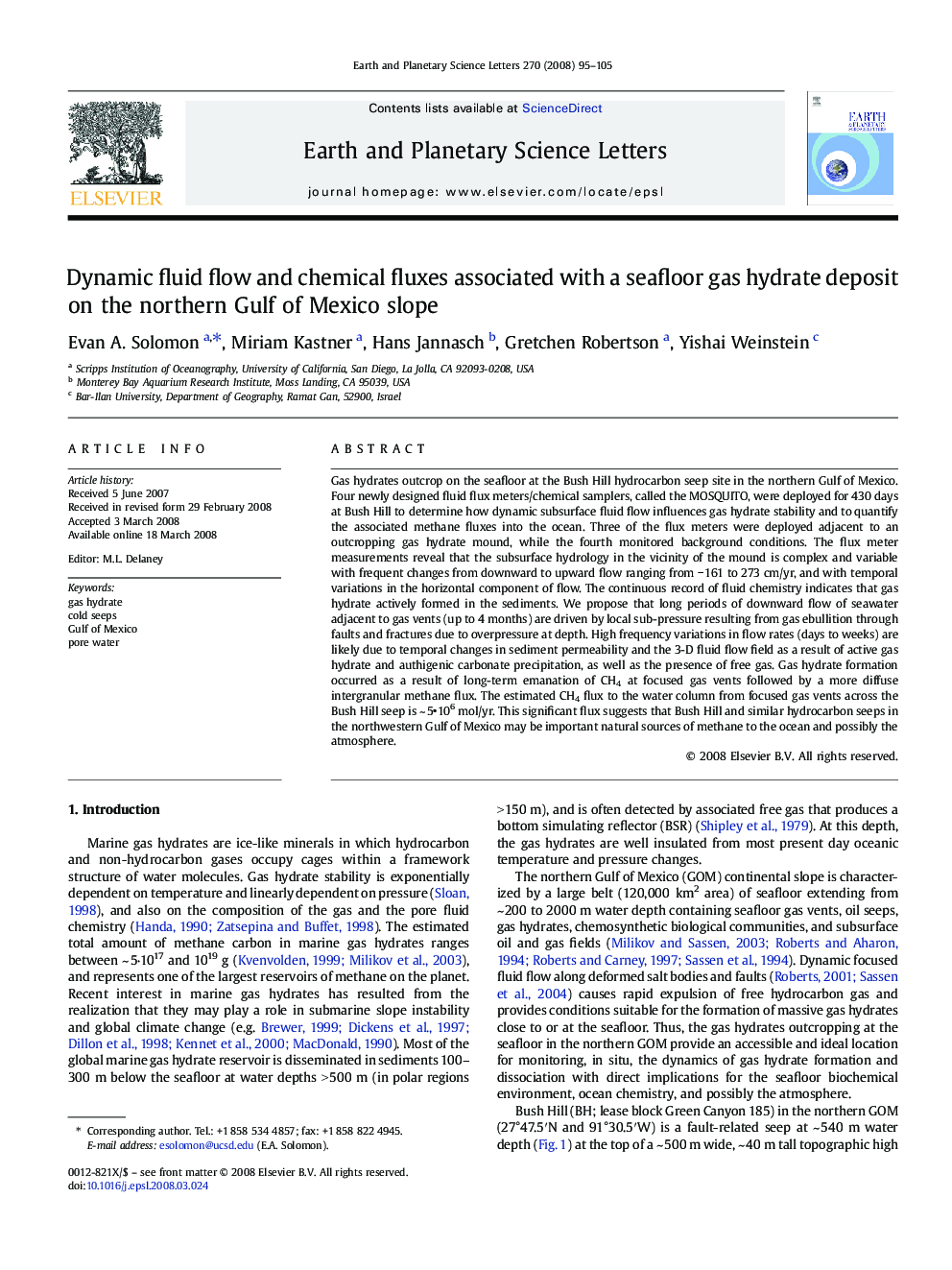| کد مقاله | کد نشریه | سال انتشار | مقاله انگلیسی | نسخه تمام متن |
|---|---|---|---|---|
| 6431077 | 1634895 | 2008 | 11 صفحه PDF | دانلود رایگان |

Gas hydrates outcrop on the seafloor at the Bush Hill hydrocarbon seep site in the northern Gulf of Mexico. Four newly designed fluid flux meters/chemical samplers, called the MOSQUITO, were deployed for 430 days at Bush Hill to determine how dynamic subsurface fluid flow influences gas hydrate stability and to quantify the associated methane fluxes into the ocean. Three of the flux meters were deployed adjacent to an outcropping gas hydrate mound, while the fourth monitored background conditions. The flux meter measurements reveal that the subsurface hydrology in the vicinity of the mound is complex and variable with frequent changes from downward to upward flow ranging from â 161 to 273 cm/yr, and with temporal variations in the horizontal component of flow. The continuous record of fluid chemistry indicates that gas hydrate actively formed in the sediments. We propose that long periods of downward flow of seawater adjacent to gas vents (up to 4 months) are driven by local sub-pressure resulting from gas ebullition through faults and fractures due to overpressure at depth. High frequency variations in flow rates (days to weeks) are likely due to temporal changes in sediment permeability and the 3-D fluid flow field as a result of active gas hydrate and authigenic carbonate precipitation, as well as the presence of free gas. Gas hydrate formation occurred as a result of long-term emanation of CH4 at focused gas vents followed by a more diffuse intergranular methane flux. The estimated CH4 flux to the water column from focused gas vents across the Bush Hill seep is ~ 5
- 106Â mol/yr. This significant flux suggests that Bush Hill and similar hydrocarbon seeps in the northwestern Gulf of Mexico may be important natural sources of methane to the ocean and possibly the atmosphere.
Journal: Earth and Planetary Science Letters - Volume 270, Issues 1â2, 15 June 2008, Pages 95-105